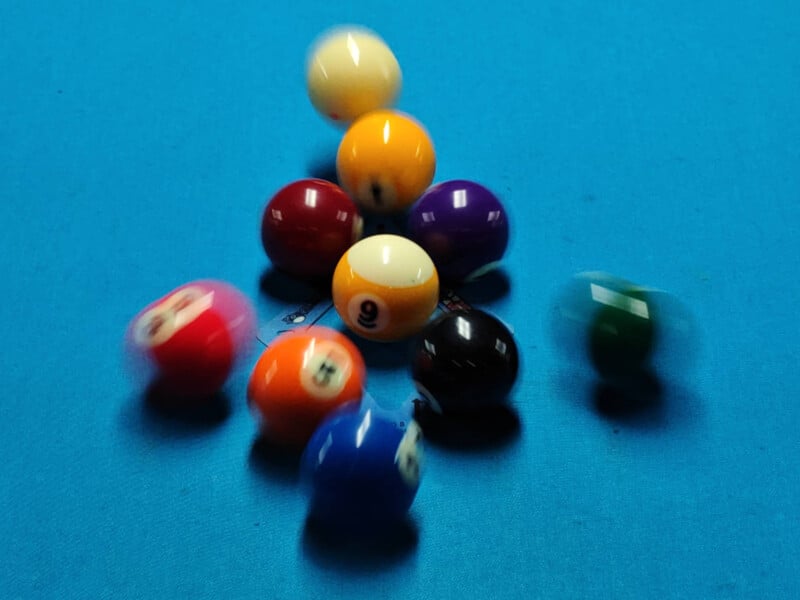![]()
There’s something happening with foldable phones that isn’t as apparent in North America, and devices like the Honor Magic V3 make that clear. Thinner, lighter, yet also packing a bigger battery and large screen, Honor puts together a compelling combination further enhanced by the camera array.
It’s not all roses for the Magic V3 but that doesn’t dampen the appeal here. It’s also a debut for Honor in that it’s the company’s first foldable to fully embrace Google Play services and present Android the way much of the world sees the platform. In short, the phone is a strong contender for the best foldable phone on the market.
Honor Magic V3: Design and Build
I covered a lot of the ins and outs over how Honor designed the Magic V3 when it launched the device in September 2024 but more of the nuance hits after using it for two months. Only 9.2mm thin, it feels like a standard, non-folding phone when folded, which is huge for a pocket-friendly device. To put it in perspective, it weighs less than the non-folding Samsung Galaxy S24 Ultra.
![]()
The camera bump in the back didn’t really become a problem, either. In fact, Honor is the only brand I’ve seen (to date) that includes a backing plate with a built-in kickstand for its foldable.
![]()
It serves a useful purpose when angling the V3 to capture something on a wider angle from a bird’s-eye view, allowing the upper half of the camera module to rest without shifting weight and making it fall over. The only problem is you need to be creative in using it or else it’s visible in the frame. Like OnePlus and Vivo, there’s also protection with a bumper for the other half, giving you at least some protection out of the box.
![]()
The Magic V3 flirts with an 8-inch OLED panel on the inside, only to fall a tad short at 7.92 inches. The 6.4-inch OLED on the front screen is a nice size in itself. Also nice to have 5,000 nits of peak brightness on that screen, along with 120Hz refresh rates on both. The inner display offers a decent 1,600 nits peak brightness, though you’re not likely to ever hit that number. This is a dimmer inner display than the competition, whereas the front screen is the brightest of any foldable. Honor’s own NanoCrystal Shield glass protects the front screen, while its Super Armored Inner Screen does the same for the inner display. I didn’t want to tempt fate by being rough with this otherwise expensive phone but can tell you that it’s pretty good at warding off scratches and blemishes from daily use.
![]()
It’s also a really satisfying device to pry open. The hinge is strong, yet also flexible enough to not turn the experience of folding or unfolding it into a chore. I can attribute part of that to this being the thinnest hinge on a foldable to date.
Its IPX8 rating isn’t the best on the market but it’s worth noting that you can submerge it to depths of 2.5 meters, which is one meter more than is typical for that level of Ingress Protection. Honor also claims it’s using some sort of silicone gel within the layers of the folding panel that hardens in case of impact. I can’t be sure how well this works but it’s an interesting way to add some shock absorption without making it obvious.
Honor Magic V3: Camera Features
Honor doesn’t have a photography partner the way its other Chinese competitors do. The likes of Leica, Zeiss, and Hasselblad don’t play a role here, which puts Honor in an interesting spot having to figure out how to chart its own mobile photography path.
There is one collaboration to note with Studio Harcourt Paris that I’ll touch on later, so it’s not a complete solo effort. Still, Honor doesn’t focus on mobile photography as much as the other Chinese brands do, even though it tends to with its other single-piece phones.
![]()
The 50-megapixel wide lens uses a Sony IMX906 1/1.56-inch image sensor and f/1.6 aperture. The 50-megapixel telephoto may be the bigger star here with its periscope lens and Lidar Matrix autofocusing. It’s also got optical image stabilization, though the f/3.0 aperture is a bit tight. The 40-megapixel ultra-wide wraps up the rear array with OIS and an f/2.2 aperture. Both front cameras use the same 20-megapixel sensor.
Credit to Honor for trying to offer some variation off the bat through the Natural, Vibrant, and Authentic styles. You’ll have to wait a little while longer to get a fuller gamut of Google-driven AI editing features but there’s actually a pretty extensive conventional toolkit within the editing suite in the Gallery app.
Honor Magic V3: Software Features
There are some neat multitasking tools available here worth exploring, albeit with some limitations. Off the bat, you can’t use a second app in split-screen with the camera app — an unfortunate roadblock in certain cases. One workaround is to “float” a second app over it. By default, when you swipe up to reveal the taskbar at the bottom, you can drag and drop an app overtop another one as a floating window. There are cool ways to expand or minimize it, including hiding it in a side panel when you need the inner screen’s full real estate for the underlying app. Within the floating window, tap the top and you can select split-screen mode to place two apps side by side.
![]()
Another workaround is to use a third-party camera app in split-screen. I had success doing it with Lightroom Mobile’s camera and the Gallery app or a web browser open at the same time. I was less successful with Varlens and VSCO, which would go dark the moment I added a second app. Honor could fix this with a software update but expect a mixed bag until it does.
![]()
Honor is also promising a range of AI features, including for photo editing, when it releases them in a pending update. Those features will be part of tighter integration with Google, so beyond Magic Eraser and Circle to Search, there may be other useful bits to utilize.
As for the camera app itself, there are plenty of modes to shoot with, all of which essentially match those seen in the Honor Magic 6 Pro. While High-Res mode lets you shoot at full resolution, you can’t shoot in RAW at full-res in Pro mode — another unfortunate limitation.
Honor Magic V3: Image Quality
Main camera
The Magic V3 won’t match the results you can get with the Magic 6 Pro, so while it’s definitely not the company’s flagship camera, it doesn’t feel like a distant relative, either. The main camera’s dynamic range is solid most of the time with rich color and visible detail. There’s some unpredictable inconsistency with saturation that washes out detail but that also depends on ambient lighting.
![]()
![]()
You’ll notice the biggest difference between day and night images. With good lighting, photos really pop, regardless of whether you’re using the Natural, Vibrant, or Authentic styles. Low-light scenes with a well-lit subject can also exceed expectations, only you may notice Honor’s processing renders a fair bit of sharpening to expose the image further. One way around that is to use High-Res or Pro mode where the software doesn’t apply the same effect.
![]()
For the most part, I think most users will be satisfied with how photos turn out. As with any foldable, however, there’s plenty of fun in finding creative ways to deploy the device. Tilt it up or down for unique perspectives or try out the Studio Harcourt mode to capture anything. I would say the Vivo X Fold 3 Pro and OnePlus Open produce better overall images, but the Magic V3 isn’t out of the running.
![]()
Telephoto
This periscope lens stands out in a good way. A 90mm equivalent (3.5x optical zoom), it offers a broad focal range in that you can focus on a subject that’s as close as a foot away. That gives you natural bokeh without using Portrait mode or combining elements of two lenses together to create that effect. It leads to pleasant results in optimal lighting. Results that, frankly, outperform Google’s Pixel 9 Pro Fold and Samsung’s Galaxy Z Fold 6. Even more so when editing them later.
![]()
![]()
While you can technically zoom all the way to 100x, it’s best not to bother because your photo will look like a blotched painting. At 5x zoom, you get a passable hybrid to work with yet sticking to the default 3.5x setting gets you something good most of the time.

I like that Honor lets you shoot with the lens in High-Res mode, so you get the full 50-megapixel resolution to work with, letting you crop in further while utilizing the advantages of the built-in periscope. Regardless of resolution, low-light and night shots may not come out as nice, though I came away pleasantly surprised at some of what I captured.
Ultra-Wide
The ultra-wide is a 16mm equivalent that doesn’t quite match the quality of the other two cameras, but Honor doesn’t treat it as a throw-in. It not only has autofocus but also macro capability, making it more versatile. It’s really ideal for perspective photography, especially when laying the phone down on the ground tilted up at something, like architecture.
![]()
Here, too, Honor lets you capture photos in High-Res mode with the full resolution from the 40-megapixel sensor. That can help bring in more detail along the edges though you will likely find low-light shots a challenge because of the smaller pixels.
Portrait and Studio Harcourt
Honor first introduced this in the 200 Pro, except I’m still not entirely clear on how close its collaboration is with Studio Harcourt. Is the mode on the Magic V3 simply a trio of filters or has the storied Parisian studio put its own mark on what we see here?

I don’t know for sure, but I can say that I enjoyed playing around with it. You’ll find it within Portrait mode where it presents three styles to choose from. Vibrant is more saturated with a cooler tone, Color is more neutral with a warmer tone, and Classic is the monochrome style the studio has long been known for. All can produce excellent shots. And since this is a foldable, taking selfies with the rear cameras is so much easier. You can’t use Harcourt with the front cameras, adding extra incentive to make yourself stand out.

The beauty of it is you don’t have to restrict photos to portraits of people. Pets and landmarks are also interesting options, as is trying it out as a street photography mode. There’s something about capturing an otherwise uninteresting scene in black and white that evokes a different way to see it.

Motion Sensing
Freezing action on any smartphone remains a challenge, no matter who’s making the device. Some brands pursue it, only you don’t see much of that with foldables. The Magic V3 is a rare exception through two particular features embedded in the main camera and Photo mode.
![]()
Motion Sensing Capture applies an AI-driven shutter to freeze a moving subject, looking for people or animals that smile, run, or jump. Enable Auto Capture and you can have the phone try taking some of the action photos for you after focusing on the subject.
It’s cool to have but it cranks up ISO to raise shutter speed enough to freeze the subject without overexposing the scene. That not only makes for a grainy shot but also one that lacks detail because of all the noise. Moreover, Auto Capture’s timing isn’t easy to trust much of the time, so you can try holding the shutter button down in burst to get the frame you’re looking for. My gripe with that alternative is the shutter lag that goes with it, taking at least a second or more to start the burst.
Video Features
I focused on still photography but also tested the Magic V3 for video. It can record in 4K at 30 or 60fps with any of the rear cameras, adding in 24fps as an option in Movie mode. Strangely, Honor leaves that out in Pro mode unless you record in log. You also get a set of LUTs to give your footage a different look. Footage from the main camera is better than you might expect from a foldable that doesn’t promote video features all that much. Low-light footage isn’t as good, and you get varying results from the telephoto and ultra-wide lenses.
Still, Honor gives you a bunch of modes and tools to try out for video on this phone, which is more than I can say for what a couple of its competitors manage.
The Honor Magic V3 Proves Foldables Can Shed
The Magic V3 feels the most like a typical, single-screen smartphone when closed. It’s so thin and light that folding it out feels like a bonus, only further reinforced by the reactions I’ve seen from those who’ve seen me do it. None of that matters if the phone doesn’t feel functional and purposeful, two factors the V3 checks. While I can’t say battery life is amazing compared to competing foldables, I never felt like it was sorely lacking when using it as my daily driver.
If anything, the V3 illustrates just how much Samsung and Google have coasted in this category. Honor joins OnePlus and Vivo in showing what’s possible with the right level of ingenuity and design. Few will recognize that in North America because of a lack of awareness but needless to say, Samsung and Google are not the trend-setters they purport to be.
The problem is the price. Honor wants $2,200 for the Magic V3 when you do the conversion, making it considerably more expensive than its competitors. I get that it goes with having a nice design that won’t feel off-putting but it’s a tough sell for any phone at that price.
Are There Alternatives?
Camera performance could be a reason to consider the Magic V3 over other options, along with its slick user experience as a foldable. The previous Magic V2 is a very different product in many ways, so this feels like a change in focus and direction for Honor. Making Magic OS better should also be a priority.
The OnePlus Open is probably the best value because it offers great software that’s had the time to mature and improve since launching in 2023. The Vivo X Fold 3 Pro may be the best foldable as far as camera performance, battery life, and flexibility, except it’s hard to tell how often it will see updates going forward. Google took some big strides in design and functionality with the Pixel 9 Pro Fold but it’s just not as good as what OnePlus, Vivo, and Honor have. The upside is years of Android and security updates. For its part, the Samsung Galaxy Z Fold 6 is forgettable as a serious alternative for similar money.
Should You Buy It?
Yes, if you can afford it and want a foldable that feels a lot like a single-screen phone when not opened. You’re also betting that the upcoming AI features and tighter Google collaboration could make Android work better on the Magic V3.
